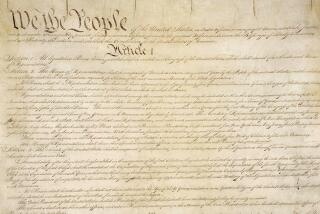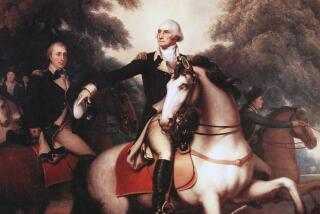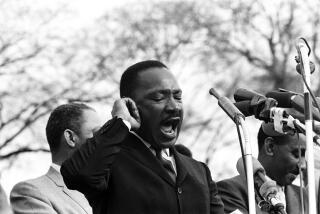Opinion: The slow-spreading news of American independence
Truth be told, when we celebrate American independence today, we’ve actually missed the anniversary by two days.
Like many elements of history, the popular understanding of how the Declaration of Independence unrolled, as it were, isn’t quite what actually happened.
It was on July 2, 1776, that the Continental Congress voted to declare independence from Britain. Two days later, it adopted the final wording of the formal Declaration of Independence, the manifesto written by Thomas Jefferson with some significant editing by John Adams, Benjamin Franklin and two others as well as the Congress itself. By the time they were done, it had shrunk by one-fourth. Even then, John Hancock didn’t start the procession of signatures with his famous penmanship until Aug. 2.
By then, we’d been fighting the redcoats for more than a year.
In this era of instant communication, it’s interesting to note the slow distribution of the Declaration, and the spreading of the word to those on whose behalf independence had been declared. (Imagine the Twitter version: Dudes, we’re on our own. #independence #totallyrad #stickitkinggeorge).
The text was set in type by Philadelphia printer John Dunlap just hours after the Continental Congress approved the manifesto on July 4. He ran off about 200 copies, most of which were then distributed via horse and boat around the Colonies. He reprinted it in his own newspaper, Dunlap’s Pennsylvania Packet, or The General Advertiser (great newspaper names back then). Over the next few weeks, Jefferson’s stirring words were reprinted in local newspapers and pamphlets around the Colonies.
And, naturally, in Britain. It took more than a month for the first reports of the Declaration to reach Britain in letters ferried by the Mercury packet ship. Gen. William Howe, who was leading the crown’s forces in the Colonies, included a brief mention in his report to his overseers. So the first public airing of the news came in the London Gazette, the crown’s official paper. If you weren’t a close reader, you could have easily missed it.
In the four-page issue dated Aug. 6-Aug. 10, 1776, the Gazette’s lead story was Howe’s update of the war, reporting that “the Rebels, who are numerous, and are very advantageously posted with strong Entrenchments both upon Long Island and that of New York, with more than One Hundred pieces of Cannon for the Defence of the Town towards the Sea, and to obstruct the passage of the [British] Fleet up the North [Hudson] River, besides a considerable Field Train of artillery.”
Howe goes on to talk about the “great Joy of a most loyal People, long suffering on that Account under the Oppression of the Rebels” that greeted him and his troops as they arrived at Staten Island. After more updates, Howe expressed confidence that “there is great reason to expect a numerous Body of the Inhabitants to join” the British army, and added a few more details about his plans to move ships up the river.
And then, almost as an afterthought, comes this:
“Several Men have within these two Days come over to this island, and to the Ships, and I am informed that the Continental Congress have declared the United Colonies free and independent States.”
And that was it. Other British papers picked up the news over the next few days and weeks. And what had started as a tempestuous fit by disgruntled subjects in those far-off Colonies evolved into a war that, much to the surprise of the crown and its supporters, Britain lost.
But the Colonists’ victory was far from certain on July 2, 1776, when the Continental Congress took its vote. Nor on Aug. 2, when the members began signing the Declaration. To put your name at the bottom of that document was to take significant personal risk; if the insurrection failed, Jefferson, Hancock, Adams and many of the others likely would have been hanged.
Remember, it’s only treason if you lose.
Follow Scott Martelle on Twitter @smartelle
More to Read
A cure for the common opinion
Get thought-provoking perspectives with our weekly newsletter.
You may occasionally receive promotional content from the Los Angeles Times.







